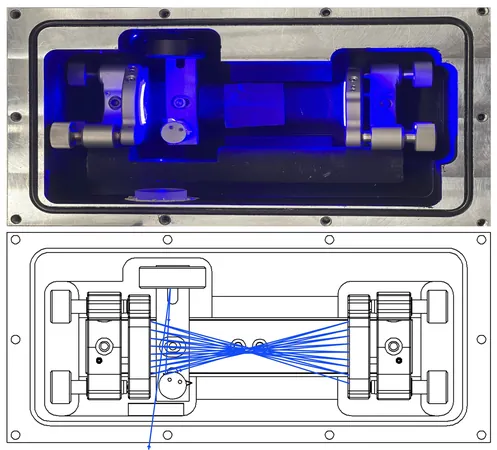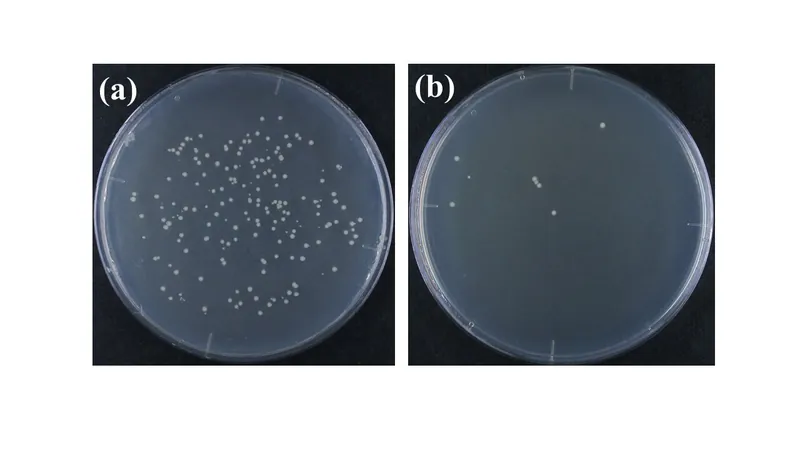
Revolutionary Portable Raman Analyzer Unleashes Hydrogen Leak Detection from Afar!
2025-04-24
Author: Arjun
A Game-Changer in Hydrogen Safety
In a groundbreaking advancement, researchers have unveiled a portable Raman analyzer capable of detecting dangerously low concentrations of hydrogen gas in the air, a critical tool for preventing potential safety disasters. With hydrogen emerging as a leading candidate for clean fuel in transportation and power generation, ensuring its safe use is paramount.
Meet the Innovation: Detecting Leaks from a Distance
Hydrogen is notorious for its flammability and ability to accumulate in confined spaces, making leaks a severe risk in industrial settings. Traditional detection often necessitates close proximity to the source, but the new Raman analyzer can identify hydrogen leaks from several meters away, offering a safe and efficient solution. Research leader, Andreas Muller from the University of South Florida, emphasized, "Our technology can sense minute changes in hydrogen levels, allowing us to pinpoint leaks without getting close."
Exceptional Sensitivity — A Leap Forward!
Published in the prestigious journal Applied Optics, this innovative tool can detect hydrogen concentrations significantly below 1 part per million within mere minutes, even spotting leaks as small as a few hundred milliliters per minute. This remarkable capability not only enhances safety in industrial contexts but also opens up avenues in scientific exploration of underground hydrogen reserves.
Overcoming Detection Challenges
Detecting low hydrogen concentrations is no easy feat—the gas is light, colorless, and odorless, making it elusive. Current portable sensors typically rely on indirect methods that fall short in accuracy. The researchers have turned to Raman scattering, a technique that allows for noninvasive substance measurement by using light to create unique optical signals.
Engineering Marvel: Enhancing Raman Scattering
The breakthrough comes from a clever design that employs multipass cavity enhancement, a method that remains resilient against environmental disturbances and avoids the need for specialized lasers. Muller added, "Our engineering innovations have enabled us to transition from lab-based Raman analyzers to a portable version that withstands outdoor challenges."
Real-World Testing: Mapping Hydrogen Concentrations
Developed with a high-output laser and an adaptive multipass cavity, the portable analyzer is equipped to handle various environmental conditions while remaining energy efficient. Graduate student Charuka Arachchige played a crucial role in evaluating the instrument's performance across different scenarios, demonstrating its capability to detect hydrogen levels as low as 63 parts per billion from several meters away, even outdoors.
The Future is Bright!
As this revolutionary analyzer continues to evolve, the team is dedicated to enhancing its detection limits, increasing recording speed, and improving its compact design. This innovation not only promises safer industrial practices but could also adapt to monitor other gases, potentially paving the way for medical applications.




 Brasil (PT)
Brasil (PT)
 Canada (EN)
Canada (EN)
 Chile (ES)
Chile (ES)
 Česko (CS)
Česko (CS)
 대한민국 (KO)
대한민국 (KO)
 España (ES)
España (ES)
 France (FR)
France (FR)
 Hong Kong (EN)
Hong Kong (EN)
 Italia (IT)
Italia (IT)
 日本 (JA)
日本 (JA)
 Magyarország (HU)
Magyarország (HU)
 Norge (NO)
Norge (NO)
 Polska (PL)
Polska (PL)
 Schweiz (DE)
Schweiz (DE)
 Singapore (EN)
Singapore (EN)
 Sverige (SV)
Sverige (SV)
 Suomi (FI)
Suomi (FI)
 Türkiye (TR)
Türkiye (TR)
 الإمارات العربية المتحدة (AR)
الإمارات العربية المتحدة (AR)